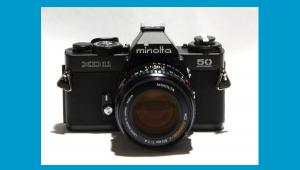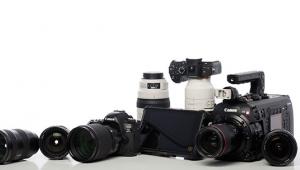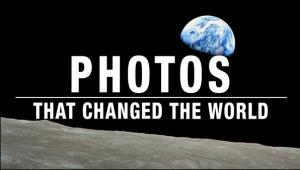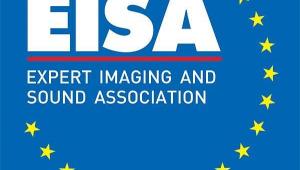Leica M9
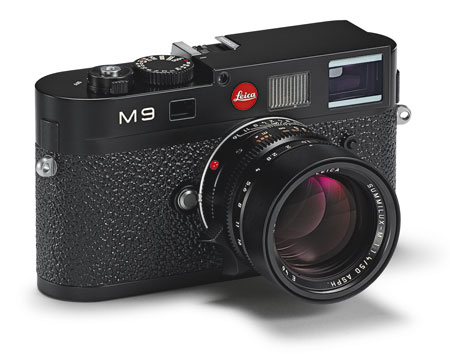
The successful combination of an extremely high-resolution image sensor, the superior performance of M lenses and sophisticated processing of the captured digital information ensures the best imaging results in all photographic situations. With its wide-ranging technical specifications, the camera adjusts to all fields of photography - from reportage and ‘available light’ to the capture of discreet and fine-art images alike. The M9 is the ideal tool for all photographers who demand the highest standards in image quality and a freedom of composition.
The 18-megapixel CCD image sensor, specifically designed and developed for the M9, enables the capture of the full 35-mm film format without any compromises. All M lenses mounted on the LEICA M9 therefore offer the same angle of view as with film camera models, meaning the enormous potential performance of the current M lens portfolio with focal lengths from 16 to 135 mm is now fully available in a digital camera for the very first time. In addition, most Leica M lenses built since 1954 can still be used on the new M9. Once again, Leica Camera AG proves their commitment to full system compatibility and the enduring value of the M series.
The sensor of the M9 features a newly developed glass cover that is designed to guarantee the suppression of infrared light in practical photography, avoiding the necessity of mounting special UV/IR filters.
Concentrating on essentials, its simple handling is a significant feature of the Leica M System. In the case of the LEICA M9, the handling has been further improved by simplification of the menu navigation: setting the sensitivity only requires holding down the ISO button while simultaneously turning the dial to select the required setting. All other functions important for everyday situations are quickly and easily accessible by pressing the set button. Furthermore, the menu also offers a snapshot profile option. In this mode, the M9 automatically sets as many settings as possible and provides a valuable aid to spontaneous and discreet photography. The camera also features automatic lens recognition via 6-bit coding. On the basis of the coded information, the M9 can compensate for any system-inherent lens vignetting effects (darkening in the image corners).
The LEICA M9 is now available in two different finishes: a standard version in black and, for the first time, a version finished in steel-grey. The two models also have different finely-structured leather coverings.
The CCD sensor specially developed by Kodak for the LEICA M9 has been optimised to fully exploit the particular qualities of the Leica M lens system. As a result, the LEICA M9 achieves highest resolution values that guarantee outstanding image quality.
The image sensor of the M9 employs further-advanced and meticulously designed micro lenses with a low refractive index. The micro lenses at the sensor edges are laterally displaced towards the image center to precisely match the characteristics of M lenses. This optimized micro lens design, based on many years of precision optical engineering experience, captures and concentrates even the most oblique rays on the sensor and reliably prevents image brightness fall-off at the edges and corners of the image. As a result, all existing Leica M lenses maintain their full performance when used for digital photography.
The intentional decision to exclude a moiré filter, which optically filters out the finest image details, was made to permit full the exploitation of the superb resolution of Leica M lenses. Any moiré patterns occurring with the M9 are eliminated in the camera’s digital signal-processing software. The optimized signal–noise ratio of the CCD image sensor reduces the need for digital post-processing and ensures that images possess an unrivaled, natural visual impact. This results in high-contrast, particularly high-resolution exposures with natural color rendition from corner to corner.
All Leica M lenses mounted on the LEICA M9 offer the same angle of view as with film camera models. Therefore, for the first time, the immense performance potential of the lenses is now maintained and can be fully exploited for digital photography. In line with Leica’s renowned commitment to extreme system compatibility, most Leica M lenses built since 1954 can be used on the new M9. As a result of the high mechanical and optical precision and extraordinarily good imaging performance, and particularly that of the current range, Leica M lenses are now ideal for use in digital photography. Performance criteria, such as the individual coating of each element, have long been a Leica standard, and there was no need to develop and implement any special measures for ‘digital lenses.’
The efficient image sensor on the M9 demands a particularly high spatial resolution that is, above all, offered by the latest M lenses. The excellent correction of optical aberrations and high resolution make them all the more suitable for digital use. The current M lenses are supplied with a 6-bit code on the bayonet mount that is scanned optically by the M9. On the basis of the coded information, the M9 can compensate for any (almost negligible) system-inherent vignetting effects if necessary. In addition, the lens type is recorded in the EXIF data of the image files and, when using the latest flash units like the LEICA SF 58, automatically adjusts the reflector to match the focal length of the lens attached.
The Leica viewfinder / rangefinder system sets the LEICA M9 apart from the market-dominating SLR and compact digital cameras and makes it particularly suitable for vibrant reportage photography, ‘available light’ exposures and discreet portraiture. Photographers become part of the action and frame whatever they wish to capture in the viewfinder – a scene, a mood, a moment. Simultaneously, the photographer still perceives what is going on outside the viewfinder frame. The decisive moment can be anticipated, and can therefore be captured at precisely the right instant. This results in particularly authentic images that are not impaired by the presence of the photographer.
The clear view of the subject remains even during exposure and, even in the most adverse lighting conditions, the bright, high-contrast viewfinder guarantees extremely fast and precise focusing. In combination with the minimal delay between releasing the shutter and capturing the shot – in digital photography too – the combined viewfinder / rangefinder system positions Leica M cameras among the fastest cameras in the world.
In contrast to SLR photography, where focusing must take place through the lens and focal length and aperture determine focusing accuracy, the rangefinder base of the Leica M remains precisely the same and independent of the actual lens being used. This is the reason why its focusing precision is immensely superior for shorter focal lengths. The high-contrast, rectangular RF spot in the center of the viewfinder guarantees fast, precise and pin-sharp focusing, even under adverse lighting conditions.
The frame selector lever allows photographers to simulate different compositions with alternative focal lengths and assess the most appropriate lens for the shot without changing lenses. Because their position is automatically adjusted by automatic parallax compensation depending on the focusing distance, the six different bright-line frames always show the precise image framing. The bright-line viewfinder shows all other information relevant to the capture of a perfect image and the peripheral area around the envisaged subject, thus providing ideal conditions for spontaneous and unobtrusive photography.
The LEICA M9 features a new, microprocessor-controlled, particularly silent, metal-leaf, focal-plane shutter that enables shutter speeds of up to 1/4000 seconds. This allows the photographer to maintain complete creative freedom by using a selective focus at maximum apertures, even in bright situations. The short flash synchronisation speed of 1/180 seconds enables daylight flash exposures with selective focus.
Together with its compact form, the camera’s virtually silent shutter is another keystone for discreet and unobtrusive photography. Additionally, photographers can select the appropriate moment for re-cocking the shutter. When longer exposure times requiring an extremely steady camera stance are essential, a slight pressure on the shutter release button in ‘soft release’ mode is sufficient.
The LEICA M9 concentrates the photographer’s attention on photographic essentials, not on setting the camera. Particular diligence, many years of experience and a vast knowledge of how professional photographers work have all influenced the handling concept for the digital functions of the LEICA M9. The result is a simple, clearly laid-out and intuitive user interface that concentrates purely on essentials; multifunction buttons and complex menu hierarchies have been avoided.
The key control element is an intuitive four-way switch and dial combination that enables fast menu navigation. Pressing the ‘set’ button activates the capture parameter menu on the 2.5" monitor screen. The most important image-capture settings are quickly and easily set in this menu: sensor sensitivity, exposure correction, white balance, image-data compression and resolution. Free profile storage spaces are also available for fast access to frequently used or application-specific combinations.
The menu button is also used for changing more permanent, values outlining basic controls in the clearly structured system menu. The photographer can also choose whether the captured image is displayed immediately for assessment on the large monitor, how long it should be displayed and whether an additional tonal value histogram is shown.
The LEICA M9 has a delayed shutter release function with a choice of two countdown times - 2 and 12 seconds.
The technical features of the LEICA M9 allow it to quickly adapt to its intended use. Its sensitivity ranges from ISO 160 (PULL 80) for wide-open apertures on bright days to ISO 2500. At the same time, very low noise and finely detailed images are achieved throughout the sensitivity range, even at the highest settings. The very low noise characteristics, a bright viewfinder / rangefinder, low-vibration shutter and fast lenses make the M9 the perfect camera for ‘available light’ photography.
The M-TTL flash technology in the LEICA M9 enables both precise and creative control over flash and mixed lighting effects. Prior to the actual exposure, a measuring flash is emitted that is metered through the lens. The flash power is then precisely determined with consideration for the natural lighting conditions, ensuring that natural lighting is maintained as much as possible In combination with the aperture priority exposure mode, the auto-slow sync function ensures subtle lighting of the subject, whereby the longest shutter speed may be set manually or, when using 6-bit coded lenses, automatically, according to the 1/focal length rule of thumb.
As a professional digital camera, the LEICA M9 naturally offers an RGB tonal value histogram, which can be displayed at any time for the assessment of stored images. This feature is also available in conjunction with the automatic image review function. A useful additional aid is the indication of overexposed image areas by means of a so-called ‘clipping warning.’ These two quality control tools are updated for enlarged views and thus allow the quality of even the finest image details to be assessed. Pressing the info function button displays all photographically relevant settings, including additional metadata stored in the image files. These functions enable full control over captured results at the shooting location of the digital images.
The M9 comes with Adobe Photoshop Lightroom, a professional digital workflow solution for Apple Mac OS X and Microsoft Windows. The software is available as an online download for all LEICA M9 customers. This also ensures that the latest release is always readily available. Adobe Photoshop Lightroom offers a vast range of functions for the management, processing and presentation of digital images, quite independent of image format. If the images from the M9 are saved as raw data in the standardized and future-proof Adobe Digital Negative Format (DNG), Adobe Photoshop Lightroom, with its sophisticated and precise processing options, guarantees direct and extremely high-quality image processing with maximized image quality. The 14-bit-per-channel color information captured by the image sensor is then processed at a16-bit-per-channel color information until the final presentation, and ensures that the most delicate tonal differentiations are preserved in maximum quality after completion of the post-processing sequence.
The tough and resilient top deck and base plate of the M9 are machined from solid brass blocks, while the full-metal body is manufactured from a high-strength magnesium alloy that ensures a long and reliable professional working life. The rechargeable battery and the SD card slot are protected from dust and moisture under the base plate, which uses a specialized locking mechanism effectively preventing unintentional opening and the subsequent loss of the battery and SD card. In addition, this long-established construction concept, already employed for decades in the Leica M System, significantly increases the structural stability of the camera body.
The experienced technicians at the Leica factory in Solms, Germany are responsible for the hand-assembly and hand-calibration of M9 bodies and the precise testing of all mechanical and electrical components. The experience gathered over decades of maintenance and repairs by Leica Customer Service creates a solid foundation for long life and enduring value. Even today, the service department maintains and repairs all M cameras built since 1954.
The LEICA M9 offers a special function for manual sensor cleaning: selecting the appropriate item from the menu and pressing the shutter release locks the shutter open to allow access to the sensor for cleaning purposes. Due to the short register of Leica M cameras, the sensor is easier to access than in DSLR cameras in which the sensors are located behind the mirror box and shutter assembly.
www.leica.com
- Log in or register to post comments
